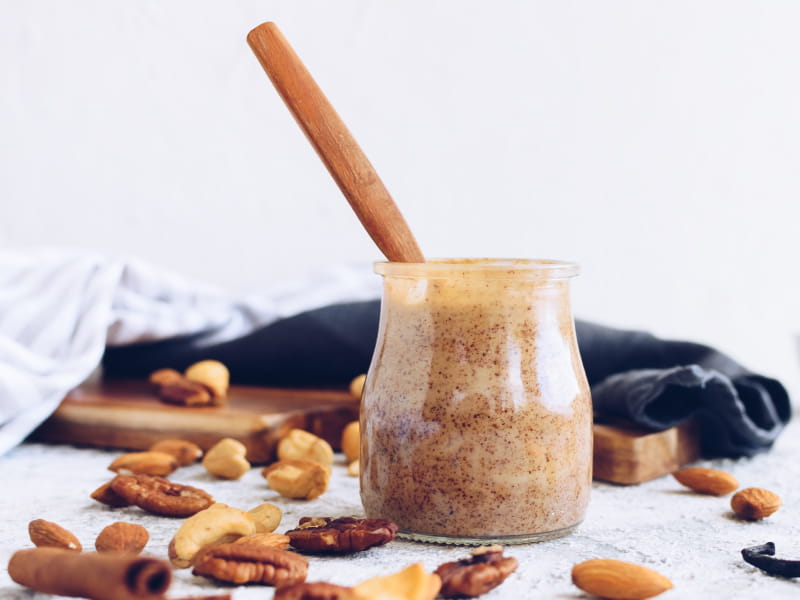Nut butters are a healthy way to spread nutrients
By Will Pry, American Heart Association News
Packed with nutrients and easy to eat, either as a sandwich spread or as a dip, nut butters can be a simple solution for school lunches, snacks and beyond.
And their growing popularity seems to be matched only by the number of varieties available. Gone are the days when peanut butter was the only choice for someone craving a chewy, nutty spread. Today, it's just as easy to find delicious butters made from almonds, cashews, macadamias or walnuts in the school cafeteria – or the pantry.
But use caution: While nut butters generally deliver the same benefits as the nuts they contain – protein and healthy fats, for example – some may contain excess amounts of sugar or saturated fats.
People who regularly eat nuts or nut butters have a lower risk of heart disease or Type 2 diabetes than those who do not include them in their diet. Some nuts, like walnuts, are high in polyunsaturated fatty acids, which are heart-healthy fats and might play a role in lowering triglycerides, a type of fat found in the blood.
Nuts – and by extension, nut butters – also include protein, fiber, vitamins, minerals and antioxidants, delivering a host of health benefits.
But often, nut butters may include large amounts of salt and sugar. Many spreads previously contained trans fats, which can raise bad LDL cholesterol levels and lower good HDL cholesterol. But the Food and Drug Administration began banning artificial trans fats in 2018.
Instead, many companies have begun to switch to saturated fats. For people who need to lower their cholesterol, the American Heart Association recommends reducing saturated fat to no more than 5% to 6% of total daily calories.
"What we're seeing is that a lot of products are being changed from trans fats, and what they're replacing it with is saturated fat," said Judith Wylie-Rosett, a professor and division head for health behavior research and implementation science at New York's Albert Einstein College of Medicine.
"They may add coconut oil, which has no trans fat in it but it gives you the same texture as a hydrogenated oil, so you end up with this palatable, malleable, spreadable product that is like the hydrogenated products. … (So,) you have to look for saturated fats as well." Coconut oil, extracted from the meat of what can loosely be called a seed, a fruit or a nut, is mostly saturated fat, about 82%.
It's a good idea to read labels and compare the levels of saturated fat, sodium and added sugars. Nuts and nut butters also may be high in calories; a serving size typically is a small handful of nuts or 2 tablespoons of nut butter. Wylie-Rosett suggests diluting nut butters by combining them with other ingredients to extend the bulk of a portion – or chopping nuts and sprinkling them on low-calorie salads or vegetables to deliver some of the nutrients and flavor of nuts without so many calories.
Nut butters also can be paired with other healthy foods such as whole-grain breads, celery, apples or pears, and even stirred into nonfat yogurt.
People who have nut allergies should check with their doctor before consuming nut butters. Those who have a peanut allergy need to ask if they can eat sunflower seed butter or soy nut butter. Hummus, made from chickpeas and tahini (sesame seed paste), also could be an alternative that is a good source of protein.
It's important to refrigerate nut butters once they have been opened, because like nuts, they can go rancid, which can make the flavor unpleasant but not necessarily unsafe. Commercial peanut butters may include preservatives to extend shelf life – six months to two years unopened and two to three months opened – but refrigeration can extend its life further. But it's more important to refrigerate natural nut butters, which contain fewer preservatives.
If you have questions or comments about this story, please email [email protected].
Eat It or Leave It?
Not sure if what you’re putting on your plate is healthy? The Eat It or Leave It? series from American Heart Association News covers the science behind foods and drinks, with an expert look at the health pros and cons.






